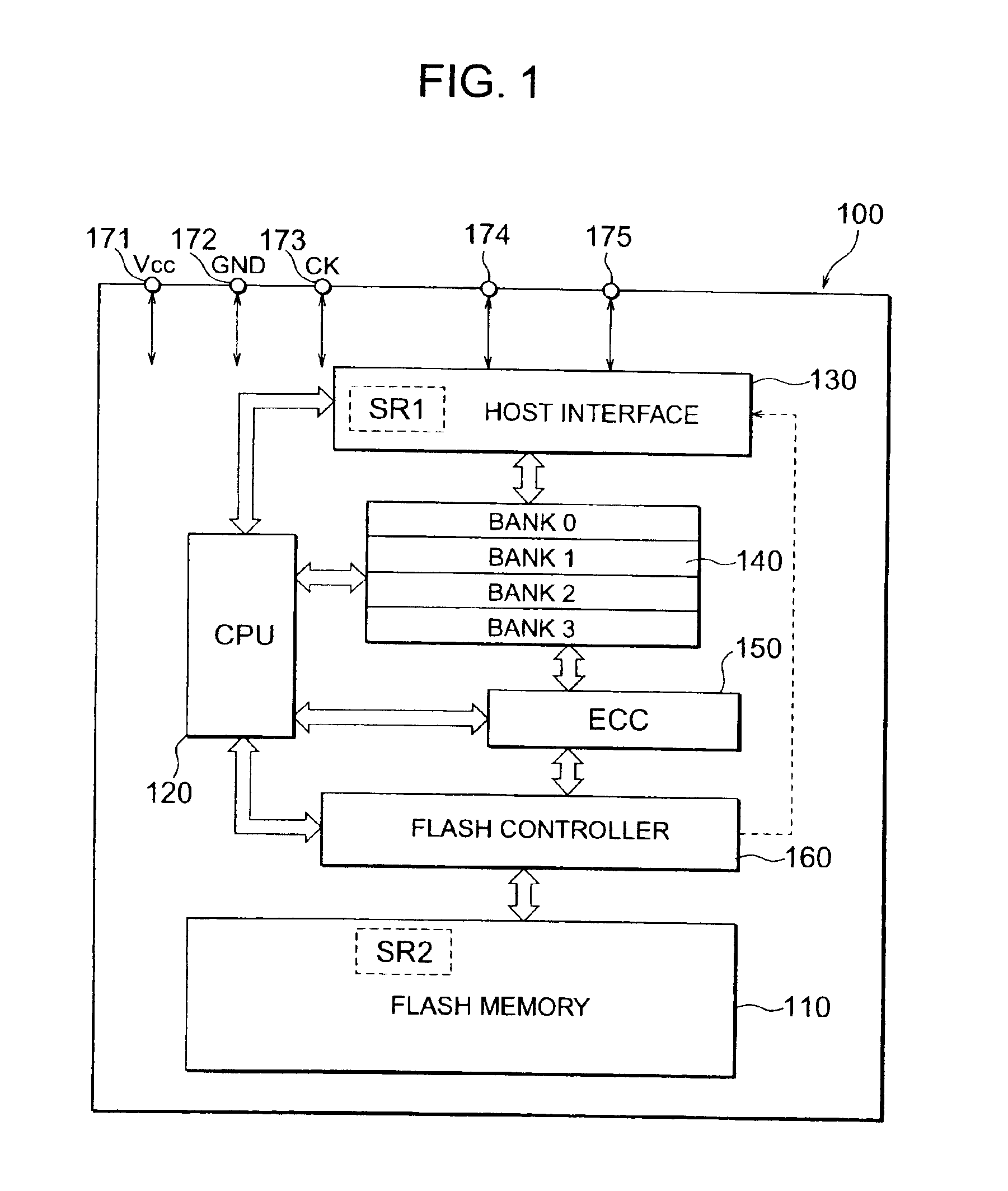Non-volatile semiconductor memory device
a semiconductor memory and non-volatile technology, applied in the field of non-volatile storage devices, can solve the problems of increasing the write voltage, changing the threshold voltage, and affecting the write speed, so as to reduce the write time
- Summary
- Abstract
- Description
- Claims
- Application Information
AI Technical Summary
Benefits of technology
Problems solved by technology
Method used
Image
Examples
first embodiment
[0037]write processing that is used when the present invention is applied to the memory card with the configuration described above will be described with reference to the flowchart in FIG. 2.
[0038]When writing data in the memory card in the first embodiment of write processing, a data transfer command is first sent from an external host CPU to the memory card (step S1). Then, write data is transferred from the host CPU to the memory card. The transferred command is supplied to the microprocessor 120 via the interface 130, and the transferred data is stored in the buffer memory 140 via the interface 130 (step S2). The command and the data described above are transferred serially. A write address is sent with the command.
[0039]After write data is transferred in a predetermined manner, the write data is then transferred from the buffer memory 140 to the flash memory 110 (step S3). The data is transferred in parallel, eight bits at a time. At this time, the write data is transferred vi...
second embodiment
[0044]Next, write processing that is used when the present invention is applied to the memory card in FIG. 1 will be described with reference to the flowchart in FIG. 3. This embodiment may be used when the status register SR2 in the flash memory 110 has the following flags: a flag indicating that a general write error has occurred when there is a bit whose threshold voltage does not reach a predetermined level at write time and a flag indicating that a recoverable error, such as an excessive write error, has occurred when there is a bit whose threshold voltage exceeds a predetermined level at write time.
[0045]Write processing in this embodiment is almost the same as that of the first embodiment in FIG. 2. The only difference is step S11 that follows step S5 in the flowchart in FIG. 2. In this step, the flag in status register SR2 are checked to determine whether to correct an error with the error correction circuit. In step S11, the excessive write error flag is checked to see if t...
third embodiment
[0048]Next, write processing that is used when the present invention is applied to the memory card in FIG. 1 will be described with reference to the flowchart in FIG. 4. This embodiment includes recovery processing for a so-called retention defect bit that is generated when the threshold voltage is out of a predetermined range because data has not been rewritten for a long time.
[0049]A part of write processing in this embodiment is the same as that of write processing in the first embodiment shown in FIG. 2. The only difference is retention defect recovery processing in steps S21-S23 that are inserted between steps S8 and S9 in the flowchart in FIG. 2.
[0050]More specifically, when the error correction circuit has judged that it can correct the error in step 8, a check is made in the next step, S21, if the number of errors is smaller than a predetermined number n (for example, 2). If so, the write operation is ended immediately. On the other hand, if the number of errors is larger th...
PUM
 Login to View More
Login to View More Abstract
Description
Claims
Application Information
 Login to View More
Login to View More - R&D
- Intellectual Property
- Life Sciences
- Materials
- Tech Scout
- Unparalleled Data Quality
- Higher Quality Content
- 60% Fewer Hallucinations
Browse by: Latest US Patents, China's latest patents, Technical Efficacy Thesaurus, Application Domain, Technology Topic, Popular Technical Reports.
© 2025 PatSnap. All rights reserved.Legal|Privacy policy|Modern Slavery Act Transparency Statement|Sitemap|About US| Contact US: help@patsnap.com



